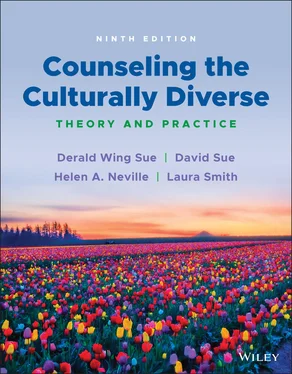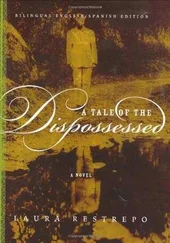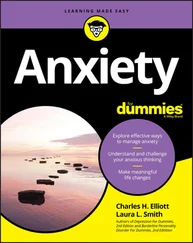Derald Wing Sue
David Sue
Helen A. Neville
Laura Smith
SECTION 1 The Multiple Dimensions of Multicultural Counseling and Therapy
Becoming culturally competent in working with diverse populations is a complex interaction of many dimensions that involve broad theoretical, conceptual, research, and practice issues. This section is divided into five parts (each part contains a number of chapters) that describe, explain, and analyze necessary conditions that mental health practitioners must address on issues related to multicultural counseling and therapy, cultural competence, and sociopolitical influences that cut across specific populations.
Part 1:The Affective, Conceptual, and Practice Dimensions of Multicultural Counseling and Therapy
Part 2:Sociopolitical and Social Justice Dimensions of Multicultural Counseling and Therapy
Part 3:Racial, Ethnic, Cultural (REC) Attitudes in Multicultural Counseling and Therapy
Part 4:Western and Non‐Western Perspectives in Counseling and Therapy
Part 5:Assessment, Diagnosis, and Treatment Issues in Multicultural Counseling and Therapy
PART 1 The Affective, Conceptual and Practice Dimensions of Multicultural Counseling and Therapy
Chapter 1Understanding Resistance to Multicultural Training: Obstacles to Developing Cultural Competence
Chapter 2Multicultural Counseling and Therapy (MCT)
Chapter 3Cultural Perspectives and Barriers: The Individual Interplay of Cultural Experiences
CHAPTER 1 Understanding Resistance to Multicultural Training: Obstacles to Developing Cultural Competence
CHAPTER OBJECTIVES
1 Acknowledge and understand personal resistance to multicultural training.
2 Identify how emotional reactions to topics of prejudice, discrimination, and oppression can act as obstacles to developing cultural competence and cultural humility.
3 Understand worldview differences between majority and socially devalued group members in U.S. society.
4 Make sense of why majority group members often react differently from marginalized group members when issues of racism, sexism, or heterosexism are discussed.
5 Be cognizant of how worldviews may influence the ability to understand, empathize, and work effectively with diverse clients.
6 Realize that becoming an effective multicultural counselor or therapist is a lifelong journey.
Video: “Emotional Reactions to Counseling the Culturally Diverse: An Interview with Derald Wing Sue”
Reading and digesting the content of this book may prove difficult and filled with powerful feelings for many of you. Some readers find the substance of the book difficult to absorb and have reacted very strongly to the content. According to instructors of multicultural counseling and therapy (MCT) classes, the powerful feelings aroused in some students prevent them from being open to diversity issues, and from making classroom discussions on the topic a learning opportunity. Instead, conversations on diversity become “shouting matches” or become monologues rather than dialogues. These instructors indicate that the content of the book challenges many White students about their racial, gender, sexual orientation and gender identity realities, and that the book's socio/cultural/political orientation also arouses deep feelings of defensiveness, anger, anxiety, guilt, sadness, hopelessness, and a multitude of other strong emotions. As you begin the course, it is important to know that multicultural psychology is much more than an intellectual exercise. It is also a journey of self‐discovery, filled with deep feelings about the subject matter, and often‐uncomfortable personal revelations.
Students who have embarked on a journey to understand MCT and multicultural mental health issues have almost universally felt both positive and negative feelings that affect their ability to learn about diversity issues. As you begin your journey to becoming a culturally competent or culturally responsive counselor/mental health professional, the road is often filled with obstacles to self‐exploration, to understanding yourself as a racial/cultural being, and to understanding the worldview of those who differ from you in race, gender, ethnicity, sexual orientation or identity, and other sociodemographic group characteristics.
We begin by sharing with you reactions by fellow classmates about their starting expectations for the course, and then their initial reactions to the content of Counseling the Culturally Diverse.
EXPECTATIONS FOR THE COURSE
White counselor trainee: What are my expectations for this course? Well, I'm here to learn about multicultural counseling and therapy. I'd like information on how to work with Black and Latino clients. I'd also like to learn how to work with LGBTQ clients as well. I hope we can talk about these things calmly and not let our emotions get in the way. Too many times discussions on race become political, and I hope we don't’ wind up blaming everything on whites. I don't want to feel like I'm walking on eggshells. I don't want to have to be politically correct. Let's keep politics out of the classroom!
Trainee of Color: I'm not sure what to expect. The majority of these classes have been a disappointment. It's frustrating to always tip toe around topics of race and racism. As a Person of Color, I want people to be honest with one another. Many people are scared to death to talk about race, and they avoid it like a hot potato. I hear it all the time. Bring up a racial issue and they'll say “race had nothing to do with it.” They'll say “you're playing the race card.” They'll say “you are forcing me to be politically correct.” I get angry and upset at times, but I can't say anything because they will think I'm just an “angry” Black man.
REFLECTION AND DISCUSSION QUESTIONS
1 How do you explain the different expectations that these two trainees have about a course on multicultural counseling and therapy?
2 Part of becoming a multiculturally competent counselor or therapist is the ability to understand the worldview of clients. What in the lived experience of these two individuals might explain their outlooks?
3 How much does your own racial background affect your perception of these two narratives?
4 Both trainees approach the course with some unease. From analyzing the statements, can you determine what fears they have?
5 Take a few moments to reflect upon your own expectations for the course. What would you like to have covered? What apprehensions or concerns do you have about the course? Can you give voice to them?
6 Because of the changing demographics of the nation, no helping professional can escape from encountering diverse clients. Are you comfortable in talking about issues of differences, marginalization, racism, sexism, and heterosexism with them? If not, what does this mean for you as a helping professional?
Students are frequently asked at the beginning of a course on MCT, what expectations they have. One of the more common responses from White trainees is revealed in the quote above. Reading between the lines, the White trainee seems to be implying that (a) learning about race, ethnicity, gender, and sexual orientation is purely a cognitive or intellectual exercise, (b) emotion is antagonistic to reason, (c) “politics” should be left outside of the classroom, and (d) as a White person, he/she may be blamed for all the racial/ethnic injustices of the world. As we shall see shortly, these expectations are setting up the White student for a very challenging experience in the course.
Читать дальше












